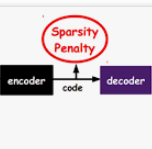Convolutional neural networks (CNNs) have been tremendously successful in solving imaging inverse problems. To understand their success, an effective strategy is to construct simpler and mathematically more tractable convolutional sparse coding (CSC) models that share essential ingredients with CNNs. Existing CSC methods, however, underperform leading CNNs in challenging inverse problems. We hypothesize that the performance gap may be attributed in part to how they process images at different spatial scales: While many CNNs use multiscale feature representations, existing CSC models mostly rely on single-scale dictionaries. To close the performance gap, we thus propose a multiscale convolutional dictionary structure. The proposed dictionary structure is derived from the U-Net, arguably the most versatile and widely used CNN for image-to-image learning problems. We show that incorporating the proposed multiscale dictionary in an otherwise standard CSC framework yields performance competitive with state-of-the-art CNNs across a range of challenging inverse problems including CT and MRI reconstruction. Our work thus demonstrates the effectiveness and scalability of the multiscale CSC approach in solving challenging inverse problems.
翻译:进化神经网络(CNNs)在解决成像反问题方面取得了巨大成功。为了理解它们的成功,有效的战略是建立更简单、数学上更易移动的进化稀释编码模型,与CNN共享基本成份。但是,CSC的现有方法在挑战反向问题方面表现不佳。我们假设,性能差距的部分原因是它们在不同空间尺度上处理图像的方式:虽然许多CNN使用多尺度特征演示,但现有的CSC模型主要依赖单一尺度的字典。为了缩小性能差距,我们因此建议了一个多尺度的进化字典结构。提议的字典结构来自U-Net,可能是用于图像到图像学习问题的最灵活和最广泛使用的CNN。我们表明,将拟议的多尺度词典纳入一个非标准的CSC框架,能与最先进的CNN在一系列具有挑战性的问题(包括CT和MRI重建)中产生竞争力。因此,我们的工作显示了多尺度的CSC方法在解决具有挑战性的问题方面的有效性和可扩展性。



